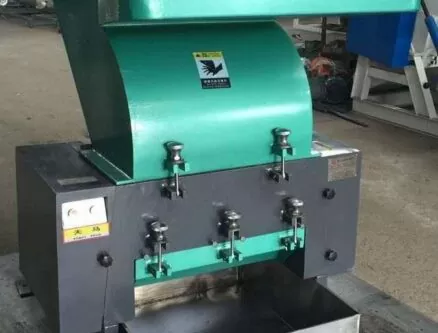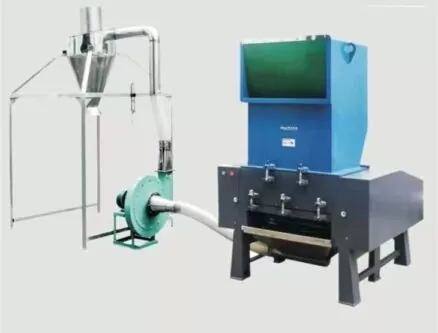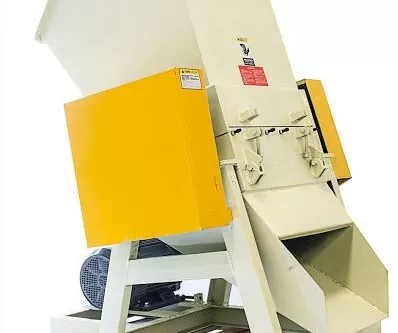We’ve all seen it: mountains of plastic waste, promises of recycling, and yet the same plastic cup shows up in your hand—again and again. Why? Because traditional recycling is often a one-way street. And let me tell you, one-way streets in recycling lead straight to landfills. That’s the problem. But I’m here to talk about the solution—a closed-loop system where plastic crushing and regeneration aren’t just neighbors, they’re dance partners.
A closed-loop recycling system integrates plastic crushing and regeneration into one continuous, efficient cycle. Crushed plastics are immediately processed into reusable pellets or materials, minimizing waste, energy use, and production time. It’s sustainable, scalable, and essential for modern recycling operations.
If you’re in the recycling business—or just plastic-curious—stick around. I’ll show you how we at Amige do it, and how you can too.

What exactly is a closed-loop recycling system?
Let’s start from the top.
A closed-loop recycling system is a process where materials are collected, processed, and remanufactured into new products without leaving the loop. No landfilling. No downcycling. Just plastic getting a new life, again and again.
It’s different from open-loop recycling, where plastic might be turned into something that can’t be recycled again—like construction filler or low-grade composites.
Our setup at Amige focuses on taking waste plastic, running it through high-efficiency plastic crushers, and feeding the resulting flakes directly into regeneration lines. These lines wash, melt, and pelletize the plastic into high-quality granules ready for re-use.
How does crushing fit into closed-loop recycling?
Here’s the truth: crushing is the heartbeat of the entire system.
You can’t regenerate what you haven’t reduced. Crushing transforms bulky, irregular plastic into uniform flakes—just the right size for washing and extrusion. And the faster and cleaner that crushing happens, the smoother the rest of the cycle flows.
At Amige, we use high-torque shredders for rigid plastic and granulators for thin film. Why? Because matching the right machine to the right plastic keeps our crushing lines flying.
We even experimented with hybrid crushing—multi-blade systems that pre-shred and granulate in one pass. Result? A 28% throughput boost in one of our client’s plants.
What types of plastics are best for closed-loop systems?
Not all plastics are created equal.
The best candidates for closed-loop recycling are:
- PET (Polyethylene Terephthalate) – water bottles, packaging
- HDPE (High-Density Polyethylene) – detergent bottles, pipes
- PP (Polypropylene) – containers, automotive parts
Why these three? They’re:
- Easy to identify and sort
- Stable under multiple melting cycles
- Widely accepted in recycling infrastructures
Other plastics like PVC or multi-layer film? Tougher to work with. They require separation steps and sometimes aren’t viable for full loops.
Our advice: know your material flow. Build your system around clean, consistent input, and your closed-loop engine will purr.

How do regeneration lines turn flakes into new plastic?
Here’s where the magic happens.
Once plastic is crushed, it’s washed and dried. No one likes dirty plastic—it gums up the extruders and lowers pellet quality.
Next comes melting and extrusion. The flakes are melted in a twin-screw or single-screw extruder, filtered to remove impurities, and pushed through a die to form long strands.
These strands? Chopped into recycled plastic pellets.
Those pellets? Ready to be used for manufacturing bottles, buckets, even furniture.
At Amige, we fine-tuned our regeneration lines with vacuum degassing and melt filtration systems. Cleaner melt = better pellets = happy clients.
Can automation improve the crushing-to-regeneration process?
Oh yes. And it’s beautiful to watch.
We’ve integrated sensors, conveyors, and PLC-controlled lines that let our shredders talk to our extruders. Literally. If the hopper’s full, the crusher slows down. If the dryer senses high moisture, the extruder pauses.
Even better? AI-based contamination detection that diverts off-spec plastic before it enters the loop.
In a closed-loop setup, every second matters. Automation keeps it flowing. One of our clients in Vietnam improved their line speed by 33% after switching to full automation.
What’s the environmental benefit of combining crushing and regeneration?
Glad you asked.
By integrating plastic crushing and regeneration, you:
- Reduce transportation (no need to move flakes between factories)
- Cut energy use (less idle time, fewer heating/cooling cycles)
- Lower emissions (fewer trucks, more efficiency)
- Minimize waste (everything gets reused)
According to the Global Recycling Council 2024, closed-loop plastic systems emit 41% less CO₂ than traditional open-loop or landfill alternatives.
In our own Amige facilities, we’ve reduced energy use per ton of recycled plastic by 22% over the past 2 years. That’s no joke.

What challenges come with building a closed-loop system?
It’s not all smooth sailing. Building a loop comes with loops of its own.
Challenges include:
- Inconsistent material streams
- Contamination
- Machine calibration across stages
- Capital investment
But guess what? They’re all solvable.
Our approach is to modularize. Start with a crushing and washing unit. Then add extrusion. Then pelletizing. Build your loop like LEGO—don’t try to build a spaceship on day one.
Also, partner with suppliers and buyers who support circular models. It takes an ecosystem, not a solo act.
Can small factories or communities build closed-loop systems?
Absolutely.
Closed-loop isn’t just for massive plants. We’ve helped local cooperatives in Thailand and Indonesia set up compact crushing-regeneration combos powered by solar energy.
Think:
- Tabletop shredder
- Low-speed extruder
- Manual pellet cutter
Sure, it’s slower. But it’s real. And it changes the game for small towns dealing with their own waste.
We even offer training and blueprints for small loop systems. Because hey, the future isn’t just for the big guys.
How do we ensure product quality in regenerated plastic?
Quality is king.
We test every batch of regenerated pellets using:
- MFI (Melt Flow Index)
- Tensile strength
- Color and odor analysis
- Contaminant scans
Our QA team at Amige is relentless. One time they rejected a full batch just because it smelled weird. Turned out someone snuck in some PS. Naughty.
But we’d rather toss a batch than sell junk. Closed-loop success depends on trust and quality consistency.
That’s why we also implement batch tracking systems. If something goes wrong, we trace it, fix it, and keep moving.

What’s the future of closed-loop plastic systems?
The future? It’s bright. And faster than you think.
We’re talking:
- Real-time monitoring
- Blockchain tracking for plastic origin
- On-site micro-loops in retail chains
- Circular economy partnerships with brands
Big players like Unilever and Coca-Cola are already piloting full-circle programs using advanced plastic regeneration lines.
At Amige, we’re working on loop-as-a-service models, where clients rent modular systems to test closed-loop setups without heavy upfront investment.
The message is clear: Crushing and regeneration aren’t two processes. They’re one mission.
Conclusion
Closed-loop recycling works when crushing and regeneration are seamlessly fused. It’s cleaner, faster, and more sustainable. At Amige, we don’t just build machines—we build loops. One crushed bottle, one regenerated pellet at a time.
